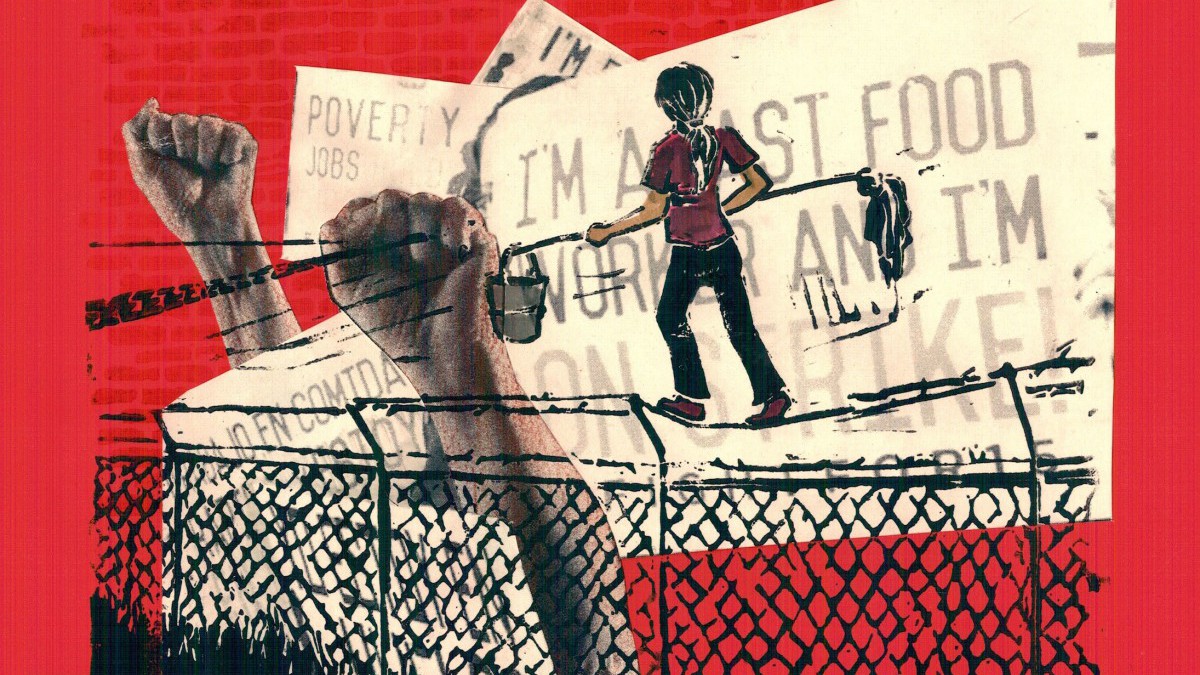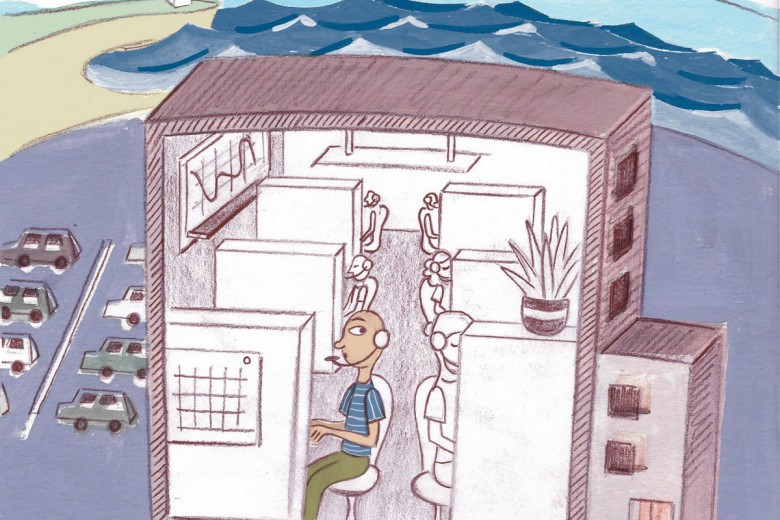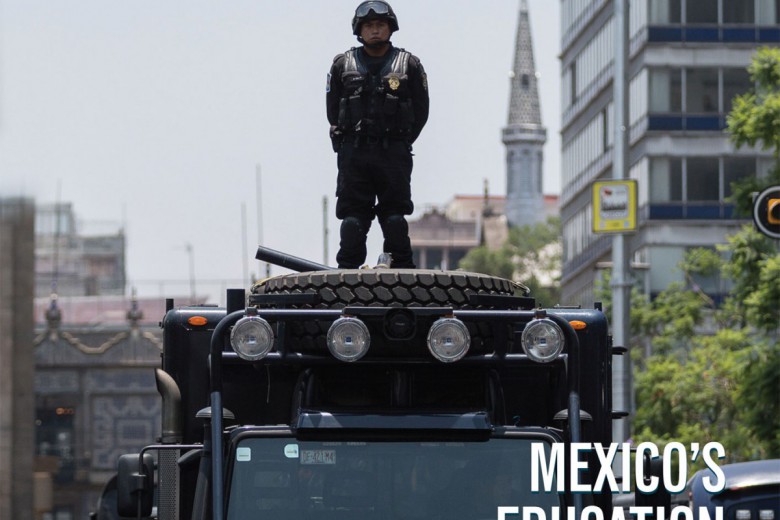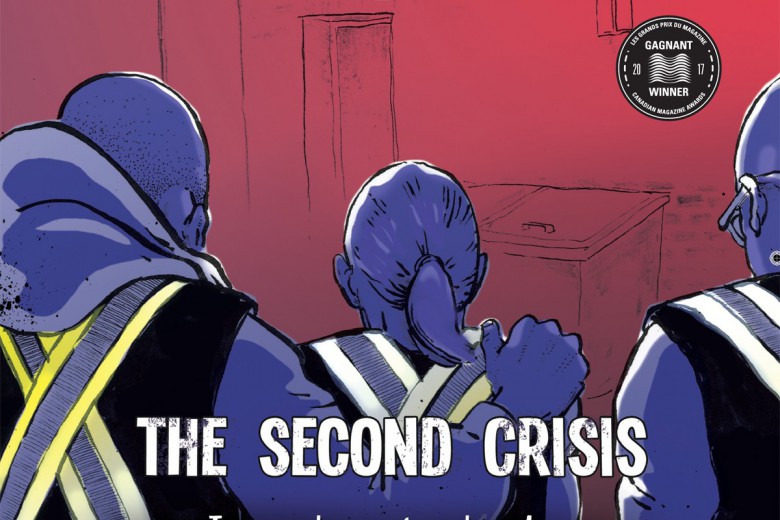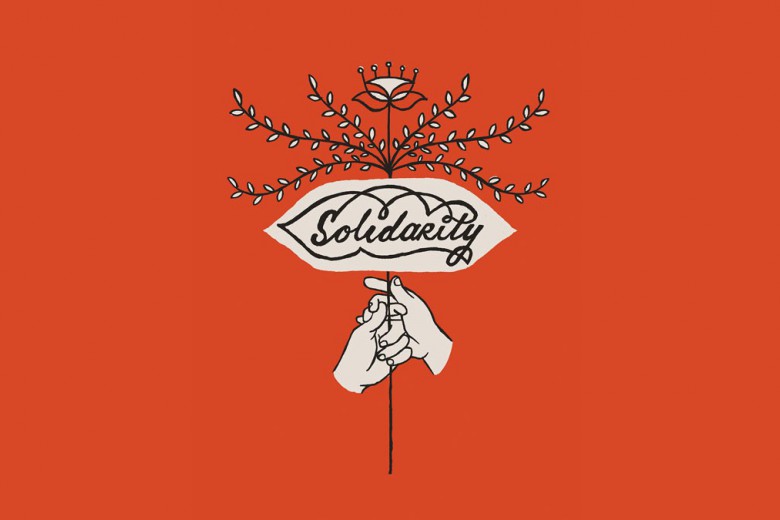For over 12 years, Erendira Keriti has earned poverty wages that have left her scrambling to afford rent and basic necessities in Toronto’s Bloor West Village. She’s not an exception: the number of low-wage jobs (defined as having an hourly rate within four dollars of the minimum wage) has grown by 94 per cent in Ontario since 1999. In 2015, the Canadian Centre for Policy Alternatives reported that more than 1.7 million Ontarians worked for a low wage – a portion of the population that grows as higher-paid, unionized work disappears and is replaced with jobs that are low-wage, temporary, contract, and non-unionized.
An Indigenous (Purépecha) refugee from Mexico, Keriti worked for temporary agencies in Toronto on and off for nine years. She took short-term contracts in factories, cleaning, and construction, often “under the table,” which is the reality for many racialized immigrant women entering Canada’s labour market. The low wages immediately sidelined her into poverty.
Many immigrant workers stay quiet about their working conditions for fear that they’ll get reprimanded, fired, or even deported. “We think that because we are immigrants, because we are women, because we are lesbian, because we are people of colour, we have to be thankful, so we just shut up and we do whatever they want us to do.” There doesn’t appear to be an end in sight for these workers: over the past 10 years, the number of workers employed by temp agencies in Toronto has increased by 33 per cent, to a total of more than 340,000 in 2014.
Despite gaining permanent residency status in 2007, Keriti continues to experience workplace discrimination based on her racial, gender, and sexual identities. “After 12 years, [we’re] still in these kinds of conditions. We’re still learning how to fight for our rights,” she says. But 10 years ago, Keriti and a group of Latinx feminist, lesbian, bisexual, queer, and trans women joined the Workers’ Action Centre (WAC) – an organization that supports low-wage workers engaged in unstable and non-unionized employment. The WAC provided information and skill-building programs in Spanish so that they could learn about employment standards and fully understand what it would take to organize for better working conditions.
Now Keriti is an organizer for the $15 and Fairness campaign – a broad coalition of workers, students, and labour, health-care and community organizations across the province mobilizing behind a petition to demand $15 minimum wage legislation. The “fairness” component involves guaranteeing seven paid sick days per year, three weeks of annual vacation, easier access to unionization, and converting temporary, casual, and contract jobs to permanent, full-time work.
But it’s not only immigrants like Keriti who face low wages and meagre labour protection. Recent college and university graduates, food service workers, freelancers, social workers, professors, and public service workers face an increasingly precarious labour market. In 2014, 11.9 per cent of workers in Ontario earned the minimum wage or less, and 29.4 per cent of all workers earned less than $15 an hour. Similar rates are found across Canada: 25.5 per cent of workers in British Columbia, 18.2 per cent in Alberta, and 32.6 per cent in Newfoundland earn less than $15.
From coast to coast, Canadian workers are feeling the pinch of a low-wage economy based on short-term corporate gain over investment in good jobs and healthy communities. Yet, organizers of the Fight for $15 and Fairness are seeking new ways of campaigning and coalition-building, contesting traditional models of the union-led pushback against precarious work – and women of colour are leading the way.
Racialized women’s work
Most precarious work – food service, retail, caregiving, cleaning, manufacturing, and domestic and manual labour – is performed by women. As of 2013, women made up almost 59 per cent of minimum wage employees in Canada. And while liberal feminists remain fixated on shattering the glass ceiling in the upper echelons of corporate boardrooms, racialized women in precarious jobs are shouldering a much wider wage gap. Take retail: 84 per cent of cashiers in Ontario are women (and 65 per cent of female retail workers make $12 or less), while men continue to outnumber women in the highest-paid management jobs.
Racialized women overwhelmingly face the brunt of precarious work. “Cost of living is going up, rent is going up, every single thing is going up – except for our pay,” says Ayesha Jabbar, a social worker and member of the Ontario Public Service Employees Union. “Women of colour often find ourselves in the lowest-paying jobs.” In 2011, Sheila Block and Grace-Edward Galabuzi reported that racialized women earned 55.6 per cent of the income of non-racialized (read: white) men; furthermore, the growth rate in the amount of minimum-wage jobs held by racialized women was much faster than for their non-racialized counterparts. Racialized immigrant women like Keriti made only 48.7 cents for every dollar that non-racialized male immigrants earned.
As capitalist development forges a class hierarchy of workers, it is gender and racial hierarchies that determine who fills the empty positions. Leah Vosko argues that the exclusion of women from the Canadian workforce has been founded on an assumed gender contract that casts men as breadwinners and women as caregivers. But racialized women face amplified exclusion at the hands of the interlocking oppressions of class, race, sex, and gender discrimination.
Tania Das Gupta argues that the precarity of immigrants, people of colour, and Indigenous workers, particularly women, in the labour market is produced by their uncertain citizenship status in Canada; lack of citizenship is due, in turn, to systemic racialization. Prior to Canada’s immigration policy changes of 1967, immigrants were explicitly restricted on the basis of race. This was partly to forge an illusory national identity built on the development of a European white settler colony (at the expense of Indigenous peoples), but also to create socio-economic hierarchies in the labour market. Racialized immigrants who managed to enter Canada were used as a reserve army of labour to perform the worst paid and hardest jobs available, premised on their supposed “willingness” to work at wages below those paid to white workers. Since then, women of colour have been consigned to the least desirable jobs in Canada.
In the post-Second World War welfare state, Canadian unions fought for protections to benefit a predominantly white male workforce. “Good jobs” with pay raises, advancement opportunities, a pension, and union benefits were largely reserved for heterosexual, cisgender white men; meanwhile, jobs for women of colour were deliberately denied such basic labour protections as overtime pay and access to unions. Women of colour, in many cases still locked out of unions, are “frozen with the minimum wage … [w]e’re taking pay cuts rather than actual raises,” Jabbar says.
Jabbar fought an uphill battle to obtain a unionized job, but not everyone is successful in doing so. A few years ago, Keriti asked the International Union of Painters and Allied Trades to unionize workers without status in Canada. She says they wouldn’t consider it, telling her that they could only assist people with social insurance. So Keriti turned to the WAC, where she was encouraged to devise new ways of organizing low-wage workers through the $15 and Fairness campaign.
Unconventional organizing
“We cannot talk about economic justice if we don’t address racial justice,” says Adriana Paz Ramirez, a mestiza organizer at the WAC. Many unions, Ramirez says, still fall short of providing welcoming spaces for workers based on their different cultural and gender identities. For their part, many of Canada’s largest unions, such as Unifor, the United Food and Commercial Workers, and the Canadian Union of Public Employees, along with local labour councils, have acknowledged this issue and created caucuses for Indigenous workers and people of colour. UNITE HERE organizes low-wage employees in hotel, hospitality, and food services, which often includes immigrants from the Caribbean and Southeast Asia. The United Steelworkers have powerfully organized on behalf of temporary foreign workers.
But there doesn’t appear to be an adequate effort to address systemic inequalities in the labour market that devalue work by women of colour. Since women of colour have been kept in positions of desperate and precarious socio-economic status, their presence in low-wage jobs has amplified tensions between workers who conceptualize their class interests in different terms. Every member of the working class endures exploitation but the reality is that class is stratified by race, gender, sex, ability, and location. These relations are constantly reproduced over time and uphold capitalism as a class system.
Capitalists keep the working class divided through paying racialized women lower-than-average wages. There can be no real class analysis that does not also examine gender and race. But differences within the working class cannot be considered more important than unity.
It is imperative to unify under common objective interests (that is, ending the exploitation of all workers) while also recognizing the material effects of exploitation amplified by race and gender. Non-unionized, racialized women forced to work for lower wages undercut the wage demands of white male trade unionists, which fragments and destabilizes the whole movement.
In response, $15 and Fairness is consciously creating an outlet for low-wage women of colour; the campaign also aims to unify the common interests of all workers. “$15 and Fairness is about racialized folk, it’s about women, because it’s tackling these issues that predominantly impact them,” argues Jabbar. The WAC’s “Feet on the Ground” program, for instance, provides a space for 32 participants from seven racialized communities (Latinx, Somali, Bangladeshi, Punjabi, Chinese, and Tamil) to build their organizational skills in the campaign.
Ramirez describes this program as an alternative to the traditional union model of organizing. Of course, strategies vary across the union landscape, but it’s typical for unions to employ professional organizers to rally their members around a particular campaign script. The WAC, conversely, provides some guidance for participants but encourages them to express their own ideas, strategies, and tactics according to their racial, cultural, and gender-based identities. “Communities of colour organize in their own terms, in their own way, according to how it makes sense for them to organize in the context of their communities,” Ramirez explains.
The WAC’s alternative model is by no means easy to implement, not least because participants speak more than seven languages. It takes time, Ramirez insists, for these workers to build their knowledge of collective rights and bargaining, and then develop organizing tools. But with time, workers become great self-organizers.
The WAC’s strategy of reaching out to racialized workers also emphasizes faith-based organizing. Jabbar says that faith-based groups like her Muslim community in Scarborough are often left out of labour campaigns. During the Ramadan celebration this summer, she canvassed outside her mosque and found that community members were eager to sign the $15 and Fairness petition. “That mosque isn’t very political. So for people to see a political action happening, it caught their eyes.” Her group gave out over a thousand flyers tailored to the event that explained how $15 and Fairness fits with the ideals of Ramadan by fostering a sense of camaraderie and care for one another’s material and spiritual well-being. Now Jabbar is working with organizers of $15 and Fairness on a faith-based statement of endorsement so that religious leaders can actively join in the campaign and spread the word to their communities.
Reshaping work and pay
The $15 and Fairness campaign in Ontario teaches us that racialized women hold enormous significance at the very practical level of deep movement building. The campaign is already building working-class solidarity across workplaces, borders, identities, and cultures, in a way that lends itself to revolutionary politics by uniting all sectors of the working class.
Internationally, racialized workers have been on the front lines of minimum wage movements and led the pushback against precarious work. With California, New York State, and Washington, D.C., recently signing $15 minimum wage legislation, and recent victories in Canada, including the Alberta NDP’s $15 an hour legislation, the campaign’s success is rapidly reshaping the world of low-wage work.
Canadian unions have a critical role in this struggle. They protect good jobs for their members, including setting the standards for education, skill levels, higher wages, and quality of life for the working class. But the rise of racialized women organizing in $15 and Fairness signals the imperative for unions to centre their analysis of the gendered and racialized differences in labour.
Our unions can and must extend their outreach to low-wage, racialized women if they are to create conditions for fairness for all workers, including those who have traditionally been excluded from the labour movement. That is the point at which we will begin to truly fight – and win – as a united front.


